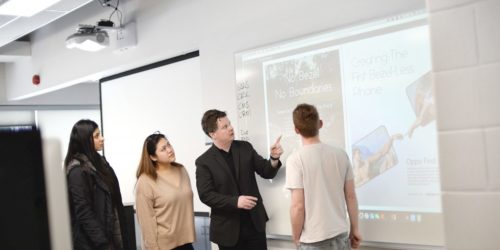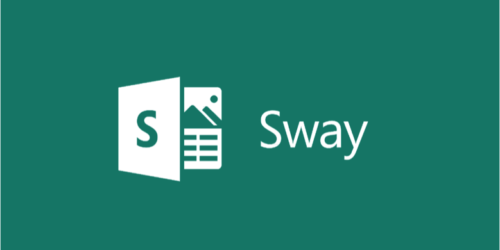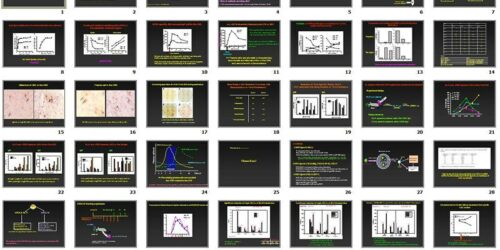
The Power of PowerPoint
Many studies have investigated the value of using PowerPoint as a lecture tool. PowerPoint’s strength is often the comfort we have as educators and learners with this lesson delivery format. But sometimes, our comfort level with PowerPoint can lead us to over-anticipate the role it plays in communicating complex ideas.
Most research on the effectiveness of PowerPoint shows that the software itself has no impact on students’ memories or their assessment scores (Clark 2008, Mehta et al 2017). Many criticize text-only PowerPoint lectures as being overly simplistic and impersonal. Bulleted lists are often overused. Text can be incomplete, and not meaningful outside of the in-lecture context. Slide decks are sometimes constructed too quickly, without consideration for learning activities or multiple modalities. Graphics and video are often underrepresented and slide decks are often reused each semester, without revision or reflection. Some researchers caution that PowerPoint can “zone out” an audience, neutralizing student-to-student interaction completely (Holstead 2015).
Further, a poorly assembled slide deck can detract from the quality of learning during presentations. PowerPoint can sometimes be too presenter-friendly, letting us record all our talking points right on the slide, conveniently organizing thoughts and jogging memories. Because of this, it becomes easy to create large PowerPoint slide decks, in the urge to be thorough in covering all the content. But large slide decks are not useful presentation or study tools, and often leave facilitators and learners scrambling to “get through” the content. The driving force of the lesson delivery becomes the facilitator’s voice and personality, rather than active learning of content.
The best use of PowerPoint, then, is to keep it learner-focussed. PowerPoint’s virtues are explaining tasks, representing visuals, or anchoring concepts. Consider engaging in “active lecturing,” where you might integrate direct instruction, active learning principles and experiential learning (Clark, 2008). Well-designed PowerPoint slide decks can improve student retention of subject matter knowledge, and help students review for tests and exams (Clark, 2008). Students report feeling more engaged and interested in course content when presented in PowerPoint (Holstead, 2015). When combined with annotations on the slides or board to clarify and illuminate definitions, diagrams and key concepts, students report that they pay better attention, enjoy the approach, and would like more lessons structured this way (Swati, 2016; Mehta, 2017). Building in active learning strategies, like discussions, games or reflections, also leaves students hungry for more (Fratto, 2011).
If a facilitator combines knowledgeable content delivery with active learning practices, a course using PowerPoint could certainly avoid the perils of “sage-on-the-stage” and effectively help students attain course outcomes.
Explore more
Try out the LinkedIn Learning course “Redefining PowerPoint in the College Classroom.” This course aims to provide some tips and suggestions for adapting PowerPoint to the college classroom. Sign in with your Conestoga email and password.
Watch some TEDtalks about great presentations. Learn more about how structure, data visualization, speaking skills, and creating calls to action can enhance a presentation.
References
Clark, Jennifer. (2008) PowerPoint and Pedagogy: Maintaining Student Interest in University Lectures. College Teaching, 56(1).
Holstead, Jenell. (2015) The Impact of Slide-Construction in PowerPoint: Student Performance and Preferences in an Upper-Level Human Development Course. Scholarship of Teaching and Learning in Psychology, 1(4).
Inoue-Smith, Yukiko. (2016). College Based Case Studies in Using PPT Effectively. Cogent Education,3. doi:10.1080/2331186X.2015.1127745
Mehta, Maulin, Sandeep Adwal and Ashutosh Chourishi. (2017) Evaluation of different teaching-learning methods according to students’ preference and perception. International Journal of Basic & Clinical Pharmacology. 6.1
Fratto, Victoria A. (2011) Enhance student learning with PowerPoint games: using twenty questions to promote active learning in managerial accounting. International Journal of Information and Communication Technology Education. 7(2).
Swati, Betharia. (2016). Combining Chalk Talk with PowerPoint to Increase In-class Student Engagement. INNOVATIONS in Pharmacy, 7(4)






